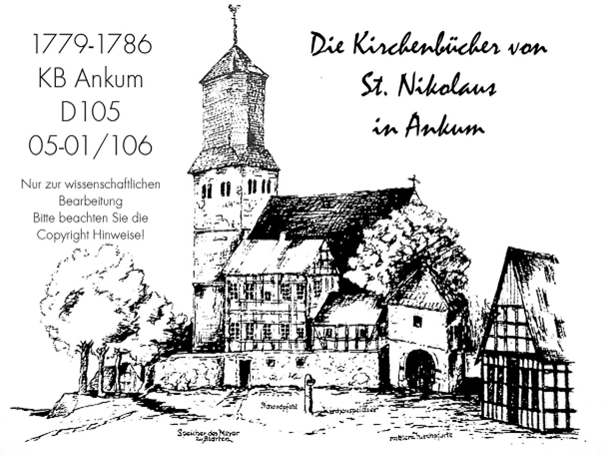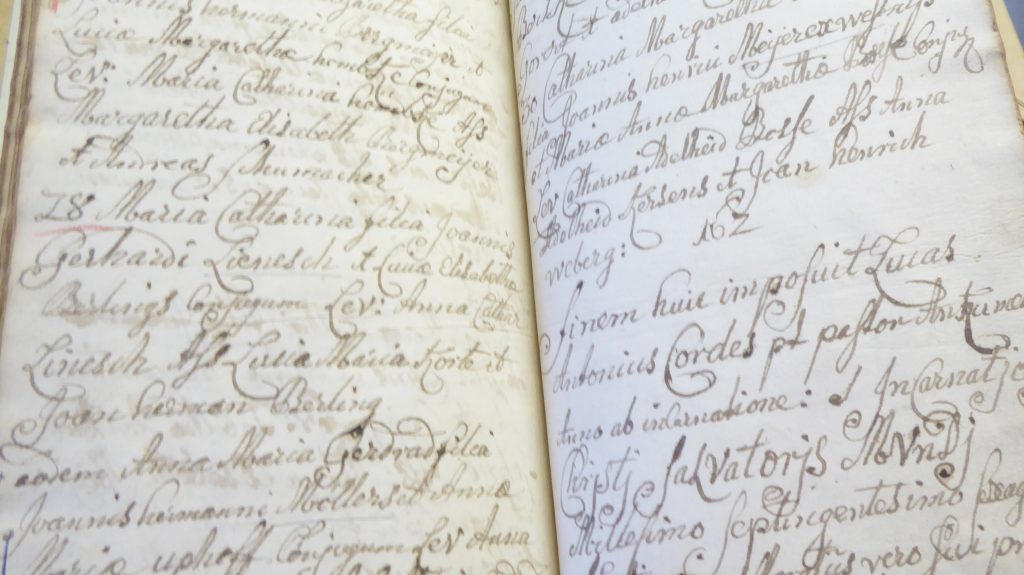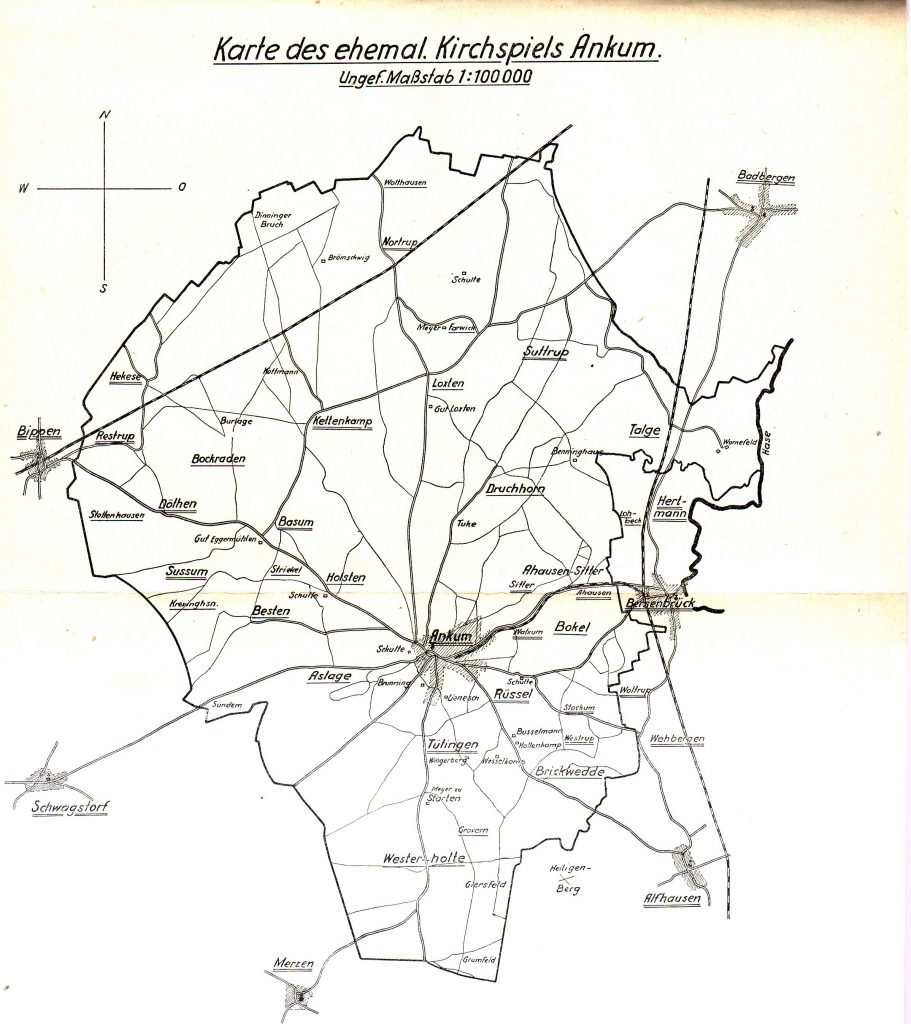Churchbooks


After the Thirty Years‘ War (1618-1648), pastors and their assistants were required to accurately register baptisms, marriages and burials. Since then more than 20 church books have been written and stored in the church archive of Ankum : The baptismal register begins in 1658, the marriage register in 1659 and the death register in 1675. The books record all the Catholic residents of the village of Ankum and the Altes Kirchspiel Ankum (old parish of Ankum,) which was very large at the time (see below on this page). There were only a few families of Lutheran faith, some of them were also registered, otherwise they belonged to the Protestant church in Üffeln, later in Loxten.
The church books are partly written in Latin, but mostly in German Kurrent script. Whether they were kept clean and orderly was up to the respective pastor. Sometimes the handwriting is very easy to read, but sometimes it is difficult to decipher. All church books were photographed and transferred to microfiche and have recently been digitized. The diocese of Osnabrück, as the owner of the church books, has published them on the Matricula platform. There, the original pages can be seen by everyone. German data protection stipulates that baptismal books may only be made accessible 120 years back, marriage and death books 100 years back. You may view the church books in the original on the platform Matricula under the following link:
Ankum St. Nikolaus | Osnabrück, rk. Bistum | Deutschland | Matricula Online (matricula-online.eu)
The Old Kirchspiel Ankum
The following places belonged to the Old Kirchspiel Ankum (map below)
Ankum- Ahausen Sitter – Aslage – Basum-Sussum – Besten mit Krevinghausen und Striekel – Bockraden – Bokel – Brickwedde mit Stockum und Westrup – Döthen mit Stottenhausen – Druchhorn – Hekese – Holsten – Kettenkamp – Nortrup mit Wolthausen, Farwick und Loxten – Rüssel mit Walsum – Suttrup – Talge – Tütingen – Westerholte mit Grovern und Starten
Ankum was the center of the old Saxon Varngau and became the first baptistery in the northern diocese of Osnabrück when Emperor Charlemagne converted it to Christianity in the 9th century. Around the year 1200, some “daughter churches” such as Bippen, Badbergen, Alfhausen and Bersenbrück became separate parishes. The remaining parish of Ankum was still very large.
Around 1848 there were about 8700 inhabitants, their number decreased as a result of emigration and further affiliations (Nortrup 1854) or encirclements (Talge and Bokel to Bersenbrück, Restrup and Hekese to Bippen and Berge), but in 1900 it still had “5000 souls “. Therefore, after the church fire of 1892 a new church was built, which was so big, that it was called “Dom” or Cathedral.
Now the Parish St. Nikolaus of Ankum is small and forms a community with Eggermühlen and Kettenkamp.

